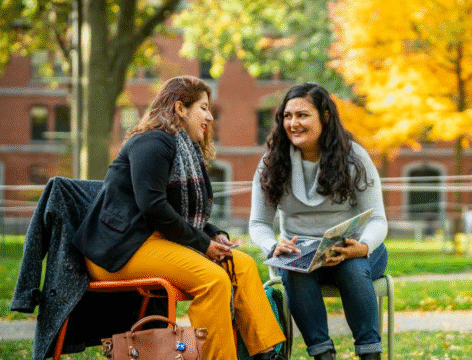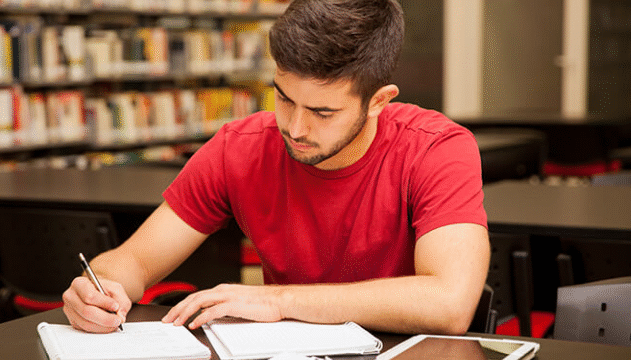Finding the right balance between study and fun can feel like walking a tightrope, especially for students navigating the fast-paced lifestyle of the United States.
Between rigorous academic schedules, extracurricular activities, part-time jobs, and social commitments, it can be challenging to dedicate enough time to learning while still enjoying the vibrant experiences life has to offer.
However, achieving harmony between these two aspects is not only possible but also essential for long-term success and well-being.
By incorporating practical strategies into daily routines, students can maximize their productivity and still create memorable experiences.
One of the first steps toward balancing study and fun is effective time management. In the U.S., students often juggle multiple responsibilities, and creating a structured plan can prevent tasks from piling up. Starting with a clear weekly schedule can make a significant difference. Assign specific time blocks for studying, breaks, and social activities. This approach ensures that each area of life receives attention without overwhelming the mind. Using planners, digital calendars, or time-tracking apps can help students stay organized and reduce stress. While it might seem rigid at first, a well-planned schedule provides a sense of control and allows room for spontaneous fun when priorities are met.
Another key strategy is setting realistic goals. Academic success often requires long hours of focus, but overcommitting can lead to burnout. Students should identify the most important tasks each day and prioritize them. Breaking down assignments into smaller, manageable steps not only improves concentration but also creates a natural sense of accomplishment. Celebrating these small victories, such as completing a challenging project or finishing a reading assignment, can serve as motivation for both academic and personal growth. Balancing fun doesn’t mean neglecting responsibilities; it means enjoying rewards without guilt once goals are achieved.
Incorporating regular breaks during study sessions is another effective way to maintain energy and focus. Research suggests that the brain benefits from short pauses, which enhance productivity and reduce mental fatigue. In American college culture, it’s common to find students taking five to ten minutes every hour to stretch, grab a snack, or take a quick walk. These micro-breaks can prevent stress from building up and provide moments of relaxation. Students can also use this time to enjoy small activities they love, such as listening to music, scrolling through social media, or chatting with friends. These breaks create a rhythm that balances learning and leisure throughout the day.
Physical activity plays a critical role in balancing study and fun. Exercise not only improves physical health but also sharpens mental clarity and boosts mood. Many campuses in the U.S. offer fitness centers, sports clubs, and recreational activities that make staying active enjoyable. Even simple activities like biking around town, hiking local trails, or joining a casual sports league can provide refreshing breaks from academic work. Students who integrate physical activity into their daily routine often find that their concentration during study sessions improves and their overall energy levels remain higher.
Another tip is to cultivate a social life while staying mindful of academic responsibilities. Participating in clubs, attending events, or simply spending time with friends can enrich the college experience. Social connections provide emotional support and help students unwind, making it easier to return to study sessions with renewed focus. The key is moderation; overcommitting to social activities can interfere with academic goals, while avoiding social interaction entirely can lead to isolation. Striking a balance ensures that students enjoy the cultural and social vibrancy of American life without compromising their studies.
Creating a productive study environment is also essential for maintaining balance. Whether in a quiet corner of the library, a cozy spot at home, or a coffee shop, having a dedicated space for learning reduces distractions and signals the brain that it’s time to focus. Students can enhance this environment by keeping supplies organized, minimizing noise, and setting clear boundaries for study time. A well-prepared environment allows for more efficient learning, which in turn leaves more time for relaxation and leisure activities.
Sleep is often overlooked but plays a crucial role in balancing study and fun. In the United States, late-night study sessions are common, but chronic sleep deprivation can negatively impact academic performance, mental health, and overall well-being. Establishing a consistent sleep routine and ensuring seven to nine hours of rest per night helps students maintain alertness, manage stress, and enjoy leisure activities more fully. When the body and mind are well-rested, both studying and having fun become more productive and enjoyable.
Students can also explore hobbies and personal interests as a way to blend study and fun. Activities such as painting, writing, cooking, or playing musical instruments offer creative outlets and provide a sense of accomplishment outside the academic realm. Engaging in hobbies allows students to recharge mentally while still feeling productive. The balance between pursuing academic excellence and nurturing personal passions contributes to a richer, more satisfying student experience.
Technology can be both a helpful tool and a source of distraction. Apps that block notifications during study sessions, digital planners, and online learning resources can enhance focus and efficiency. At the same time, students should be mindful of overusing devices for entertainment, which can eat into valuable study time. Establishing boundaries for technology use ensures that both study and leisure activities are intentional and fulfilling.
Finally, practicing mindfulness and self-awareness helps maintain balance. Reflecting on daily routines, identifying stress points, and recognizing personal limits allow students to adjust their schedules and habits. Techniques such as meditation, journaling, or deep-breathing exercises can reduce anxiety and improve focus. By staying in tune with their own needs, students can create a lifestyle that harmonizes academic responsibilities with fun, social, and personal interests.
Balancing study and fun in the United States is not about rigidly separating work from leisure. Instead, it is about integrating these aspects of life thoughtfully and intentionally. By managing time effectively, setting realistic goals, incorporating breaks and physical activity, cultivating social connections, creating productive environments, prioritizing sleep, pursuing hobbies, and practicing mindfulness, students can achieve a well-rounded experience. This balance not only supports academic success but also fosters personal growth, mental well-being, and the enjoyment of all that American life has to offer.
Achieving equilibrium between study and fun is a dynamic process that evolves as students progress through their educational journey. Each individual’s needs, responsibilities, and interests are unique, making it important to experiment with different strategies and adjust accordingly. Ultimately, the ability to balance study with enjoyment leads to a fulfilling and successful student experience, one that prepares individuals not only for academic achievement but also for a lifetime of enriched experiences.




